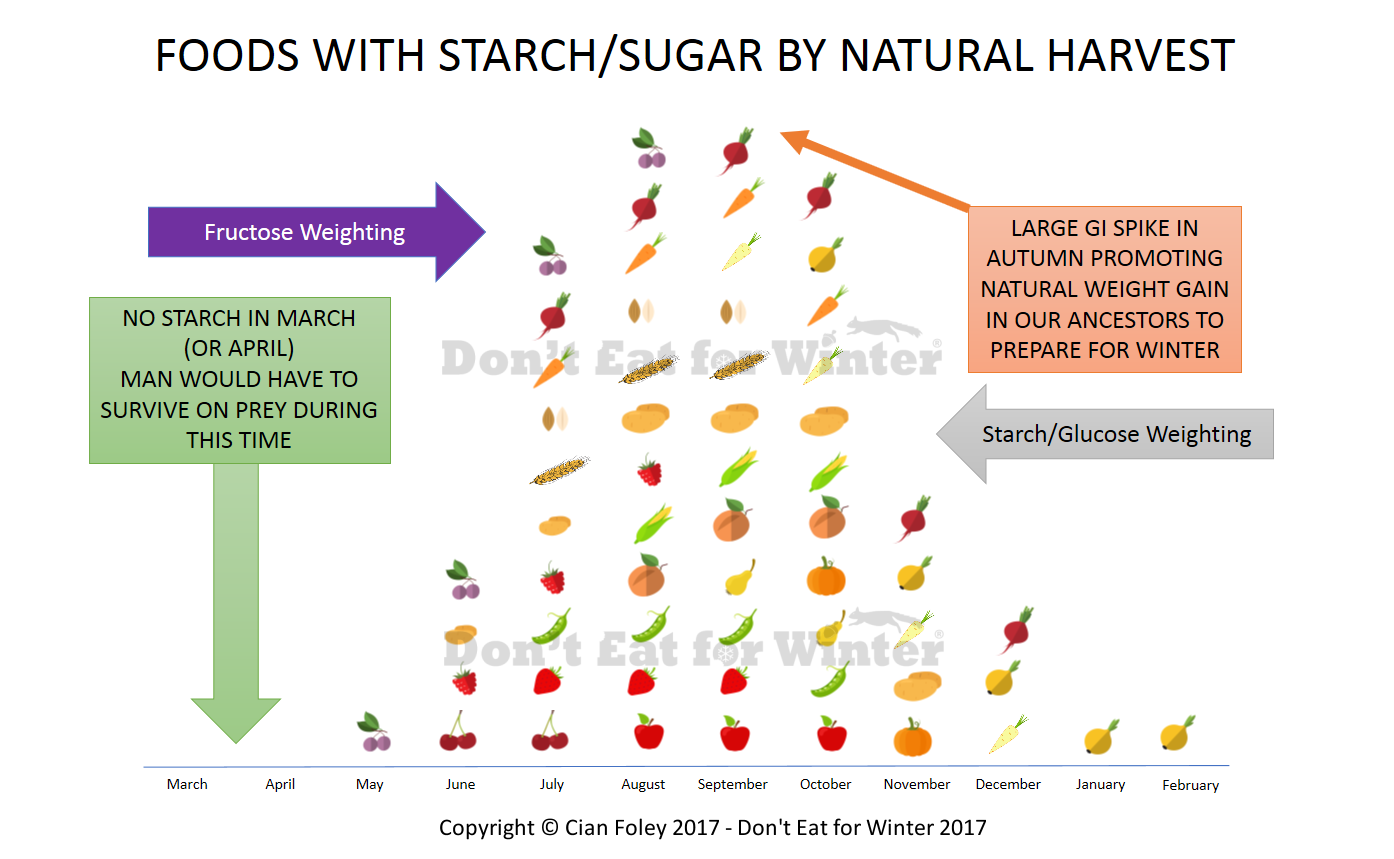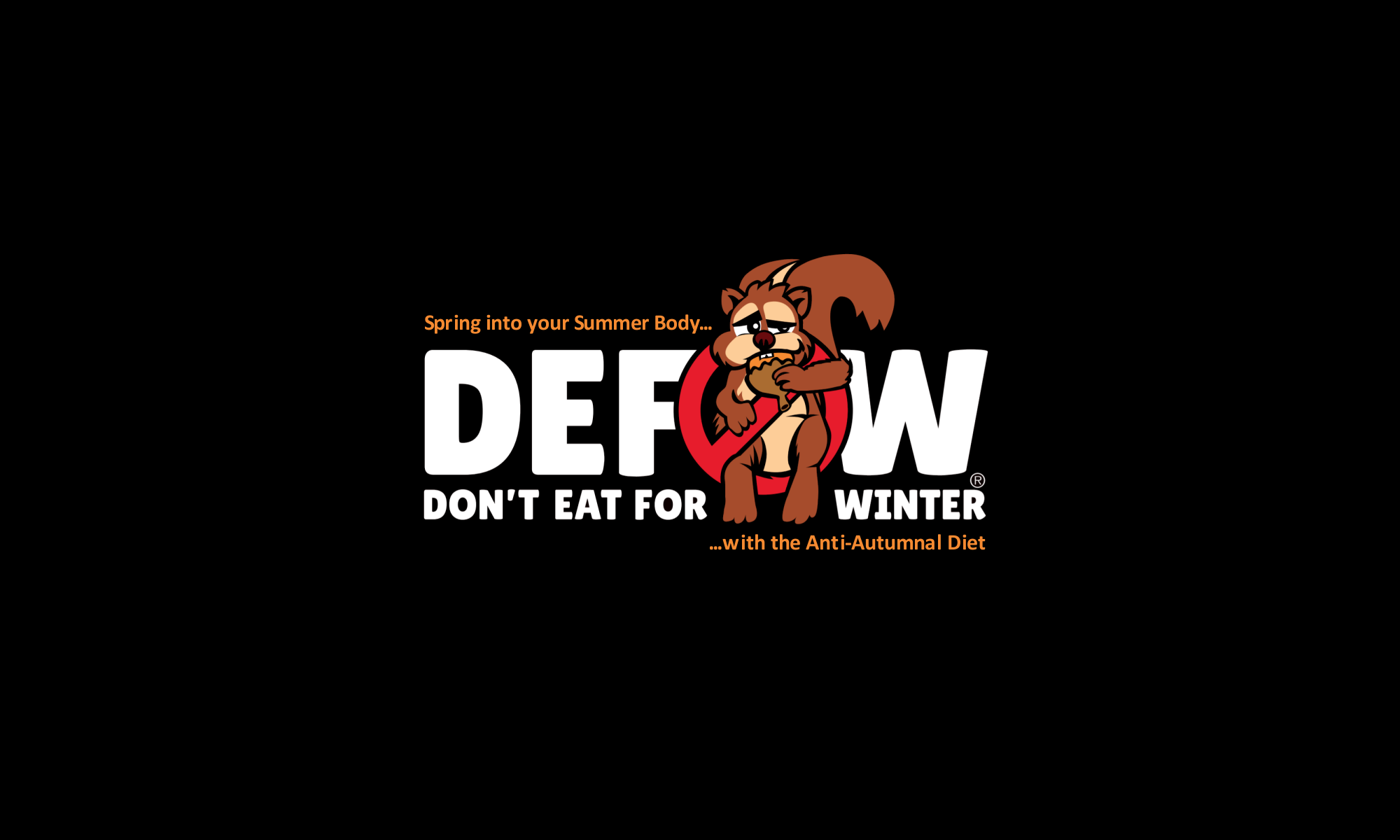The food pyramid below (visit here to access original pdf files) changed in 2016 and now has fruits and veg at the bottom, which is great.

I don’t want to be overly critical of it but do you notice anything strange about the bottom 2 rungs?
It recommends 5-7 servings a day of the bottom rung, and 3-5 of the second (up to 7 for boys and men up to 50).
Analyse the foods in that second rung: bread, cereal, pasta, potatoes and rice. Potatoes harvest between summer and autumn, and are non-indigenous, grains similarly require a good summer and pasta and bread are derived from it. Rice is non-indigenous too.
On the bottom rung we have some great foods, but I worry about orange juice and bananas as both are non-indigenous and high in sugar/starch. I’m less worried about apples, yet they are autumnal too. Berries are summer fruits typically.
What have all of these foods got in common?
They don’t exist in nature all year round! Typically sugary and starchy foods require lots of sunlight to produce, it’s a process called photosynthesis, which we all learn about in school.
“Green plants absorb light energy using chlorophyll in their leaves. They use it to react carbon dioxide with water to make a sugar called glucose. The glucose is used in respiration, or converted into starch and stored(my emphasis) Oxygen is produced as a by-product. This process is called photosynthesis.” – BBC GCSE Bitesize
“Photosynthesis is a process used by plants and other organisms to convert light energy into chemical energy that can later be released to fuel the organisms’ activities (energy transformation). This chemical energy is stored in carbohydrate molecules, such as sugars (my emphasis), which are synthesized from carbon dioxide and water.” – Wikipedia
Basically, foods rich in sugar and starch come into existence in nature in summer and become abundant in autumn. This is a direct result of the sunlight the plants are exposed to.

In autumn, creatures like squirrels put on weight as a result of this in a knock on chain reaction, preparing them for winter. Their diet changes and they become hyper-active, yet bulk up quickly for winter. They lose it when resting over the winter, happily living off their body-fat.
I believe human beings have a similar abilities, as it was recently discovered that we can develop brown adipose tissue (BAT) to protect us from the cold of winter. It’s main source of fuel is white adipose tissue (WAT), the jiggly stuff we don’t like to have too much of, which must develop first. Therefore, I believe it is the additional variable of abundant carbohydrates, in conjunction with fat in the diet, that triggers autumnal instincts within human beings. Our base instincts to survive winter are invoked, and we are guiled into overeating such foods as they are hyper-palatable for one main reason: survival! This has been shown to be true in recent studies of cafeteria diets, and can affect us in similar ways to drugs. Squirrels obviously go nuts (pardon the pun), some of which are very high in carbs and fat (e.g. acorns or oak nuts), at this time of year because of similar chemical triggers within them, it stands to reason we would be affected based on our evolutionary heritage too having shared similar eco-systems and foods.
Basic logic would suggest to me that we shouldn’t be eating up to 14 servings of foods that only exist in nature in summer/autumn every day of the year and I’m surprised so few people are aware of this. I propose the food pyramid become more dynamic and take into consideration our evolutionary heritage and our sensitivity to seasonal triggers.
If we exposed squirrels to an infinite harvest, the same way we are exposed, I wonder how obese and sick they would become. We know squirrels and bears become pre-diabetic in autumn and reverse it in spring. I suspect if their autumn became infinite like ours we might find a large portion of their population would become unnaturally obese/overweight and suffer from related conditions like diabetes etc. Look at our world, with so much obesity, and with diabetes continuing to rise, and all sorts of other related health concerns, is it any wonder that this is happening when we are living in a constant autumnal state?
If us living in an eternal harvest isn’t bad enough, it is compounded by the fact that we have all sorts of processed derivatives which are energy dense and nutrient light. I term this the infinite autumn, on steroids.
Let’s address this and consider the seasons more in our daily diets. My own approach, known as The DEFoW Diet, is to eat seasonally on a daily basis i.e. a spring meal, a summer meal and an autumn meal (modified slightly). I also have occasional treats and I think the food pyramid is correct about limiting junk foods to 1-2 times a week (maximum).
This seasonal approach has helped me lose 90lbs and maintain my weight in the ideal range for years. I am in full control of my weight in my 40s having struggled all my life because I now understand what was going on. I was eating for winter all of the time.
Latest posts by Cian (see all)
- The worst macro combination for fat loss - May 11, 2021
- Top 200 Most Fattening Foods (most autumnal) - March 19, 2020
- Is there such a thing as The Perfect Diet? - November 22, 2019
